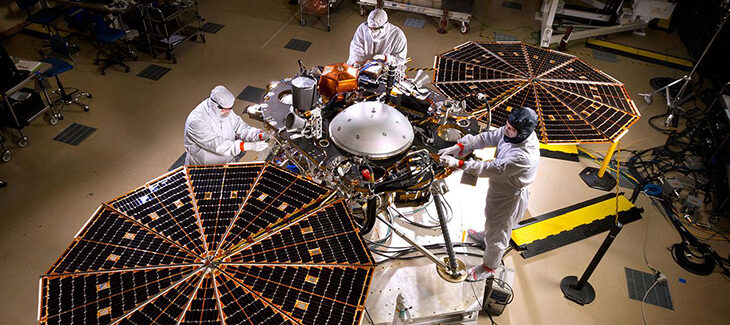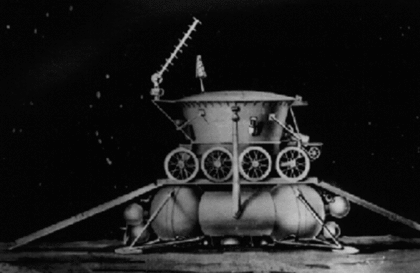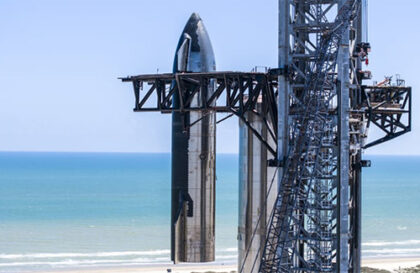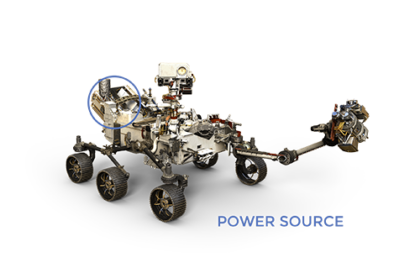The Russian Mars 96 failed due to a problem with the second launch of the fourth stage in November 1996. The second and fourth stages of block D-2 were unable to launch. In the 1990s, a number of Mars missions, including Japan’s Nozomi and several NASA probes (Mars Polar Lander, Deep Space 2), also encountered problems, often related to technical errors—for example, there was confusion between US and metric units in the case of from Mars Climate Orbiter.
Of NASA’s six missions in the 1990s, only Mars Pathfinder and Mars Global Surveyor were successful.
On June 2, 2003, the European Space Agency launched Mars Express to Mars from the Baikonur Cosmodrome. The spacecraft included an orbiter and a Beagle 2 lander (not designed for propulsion), equipped with a robotic arm and various devices to analyze the soil beneath the dusty Martian surface.
On December 25, 2003, the Mars Express orbiter reached the orbit of Mars, but contact with the Beagle 2 lander was not established. After a month of attempts, Beagle 2 was declared lost, and an investigation ensued, blaming Colin Pillinger for the mismanagement of the project. Meanwhile, Mars Express has detected water ice and carbon dioxide ice at Mars’ south pole, adding to NASA’s early data about the north pole.
Signs of Beagle 2 were discovered on Mars in 2013 by HiRISE, and its presence was confirmed in 2015 after Pillinger’s death. The craft landed successfully but did not activate its power and communications systems.

Here is some debris from a Mars landing, as viewed by a Rover. This shows the area around a heat shield and resulting shield impact crater. The heat shield was jettisoned during the descent, impacting the surface on its own trajectory, while the spacecraft went on to land the rover. Credit: Animation of a Mars landing touchdown, the InSight lander in 2018 Credit: Wikipedia Public search
Problems during landing on Mars
The inset frames show how the lander’s descent imaging system is identifying hazards- Credit: NASA.
Landing a robotic spacecraft on Mars, and perhaps someday a human, is a technological challenge. Choosing a landing site is problem #1.
For a successful landing, the lander must solve the following problems:
The Subtlety of the Mars Atmosphere,
Measuring the distance to the surface,
Inadequate ballistic air capture technology,
Inadequate retro-propulsion technology,
Inadequate mission design,
Reduced entry, descent, and landing time (EDL).
So, for the rover to successfully land on February 18, 2021, hundreds of critical events must unfold flawlessly and precisely in time.
Perseverance’s Stages of Descent. Credit: NASA/JPL-Caltech.
The Entry, Descent, and Landing (EDL) phase begins when the rover reaches the upper Martian atmosphere, traveling at approximately 20,000 km/h, and ends seven minutes later with the rover landing on the planet’s surface. Perseverance controls this process autonomously, as the signal from Mars takes more than 11 minutes to reach Earth. This means that by the time the team learns that the vehicle is entering the atmosphere, the rover is already on the surface of Mars.
Landing of the InSight lander on the surface of Mars
(Source: https://en.wikipedia.org/wiki/InSight#Journey_to_Mars )
In 2018, NASA successfully landed the InSight lander on the surface of Mars, reusing technology from the Viking Age.
This is an illustration showing a simulated view of NASA’s InSight lander about to land on the surface of Mars. This view shows the underside of the spacecraft. Credit: NASA/JPL-Caltech
The spacecraft’s mass entering the Martian atmosphere was 1,340 pounds (608 kg). InSight’s landing took place in three main stages:
- Entry: After separation from the winged stage, the aeroshell enters the atmosphere and is exposed to air and dust in the Martian atmosphere.
- Parachute descent: At a certain speed and altitude, the parachute deploys to slow down the descent vehicle further.
- Rocket descent: Closer to the ground, the parachute is released, and the lander uses rocket engines to slow the lander down before landing.
Landing sequence:
November 25, 2018, final course correction before EDL.
November 26, 2018, the cruise stage is discarded before re-entry.
A few minutes later, the aeroshell containing the lander makes contact with the upper layers of the Martian atmosphere at a speed of 12,300 mph (19,800 km/h).
It is 80 miles (130 km) above Mars and lands in the next few minutes but goes through many stages.
The Aeroshell heats up to 1,500 °C (2,730 °F) during descent.
The parachute deploys at a speed of 385 m/s (1260 ft/s) and ~11,100 m (36,400 ft) above the surface.
After a few seconds, the heat shield is released from the lander.
The landing legs extended.
Landing radar activated.
The back shell is shed at a speed of about 60 m/s (200 ft/s) and at an altitude of 1100 m (3600 ft).
The landing rockets turned on.
At approximately 50 m (160 ft) from the ground, constant speed mode is entered.
Approaches the ground at about five mph (8.0 km/h).
Landing – Each of the lander’s three legs has a sensor to detect contact with the ground.
Launched rockets are turned off upon landing.
Begin ground operations.
The lander’s mass is about 358 kg (789 lb), but on Mars, which has 0.376 Earth gravity, it weighs only the equivalent of 135 kg (298 lb) of an object on Earth.
InSight lander technology works, but…
This technology cannot support landing large quantities of cargo, habitats, launch vehicles, and people for manned missions to Mars. To improve and realize this goal, it is necessary to modernize technologies and launch vehicles. For a successful soft landing using modern technology, some critical factors for the lander must be taken into account, such as:
Weight must be less than 0.6 tons (1300 lbs).
The ballistic coefficient must be less than 35 kg/m2 (7.2 lbs/ft2).
The diameter of the aerofoil must be less than 4.6 m (15 ft).
The geometry of the aeroshell should be a spherical conical shell at an angle of 70°.
The parachute diameter must be less than 30 m (98 ft).
The need to use a supersonic retropropulsion mechanized descent system.
The need to enter orbit (exit from Mars orbit).
ESA’s Schiaparelli lander. The lander’s computer, contaminated with IMU data, apparently decided it had either already landed or was about to land. The parachute system was released, the braking engines were activated only briefly, and the ground systems were activated. Instead, Schiaparelli was still 3.7 km above the surface of Mars. He crashed.
Methods of descent and landing
As of 2021, all Mars landing methods have used an aeroshell and parachute sequence to enter and descend into the Martian atmosphere. But after detaching the parachute, there are several options:
Rocket engines (soft landing):
The device activates rocket engines to slow down and softly land on the planet’s surface.
Airbags:
After the parachute is detached, the vehicle is surrounded by air cushions that absorb the shock during landing (for example, the Mars Pathfinder and Mars Exploration Rovers missions).
Braking using a sky crane:
The descent vehicle, supported by a rocket-propelled sky crane, is gently lowered to the surface, after which the sky crane is disconnected and flies away to a safe distance. Suitable for heavy vehicles, such as the Curiosity and Perseverance missions.
Guided aerodynamic landing:
Aerodynamic shields and steerable vanes guide and slow the craft as it descends through the Martian atmosphere.
Hard landing:
In some missions, where the accuracy and safety of the vehicle are not critical, a hard landing without soft braking can be used. It can also be considered as an emergency landing option.
Combined strategies:
Combining the above methods maximizes the chances of a successful landing and minimizes risks.
Banner image: NASA/JPL-Caltech
Image credit:
https://en.wikipedia.org
https://en.wikipedia.org
https://mars.nasa.gov
https://mars.nasa.gov
https://spacenews.com






